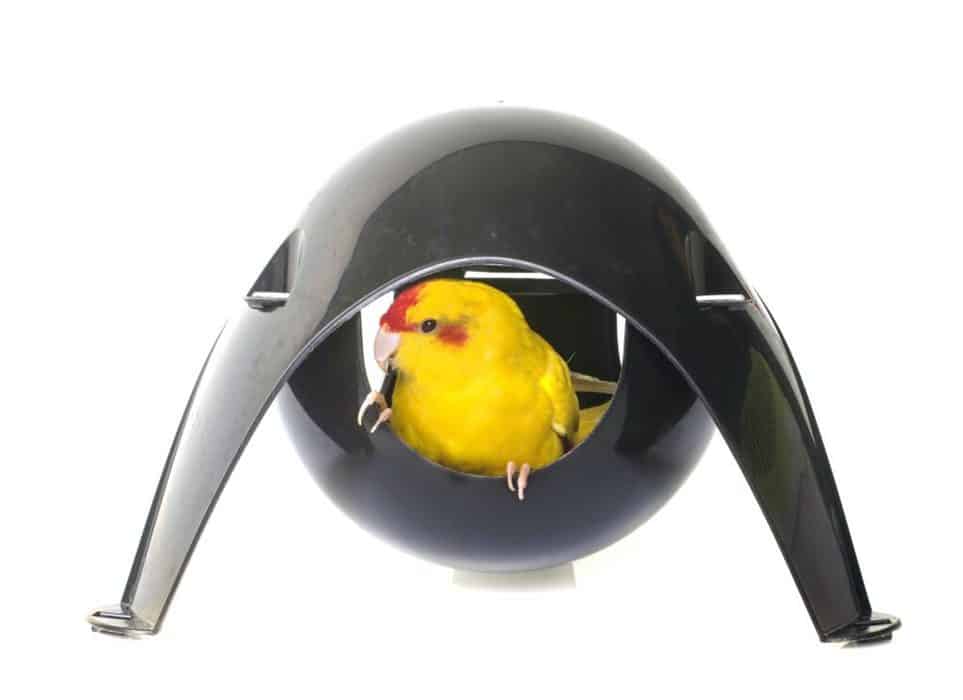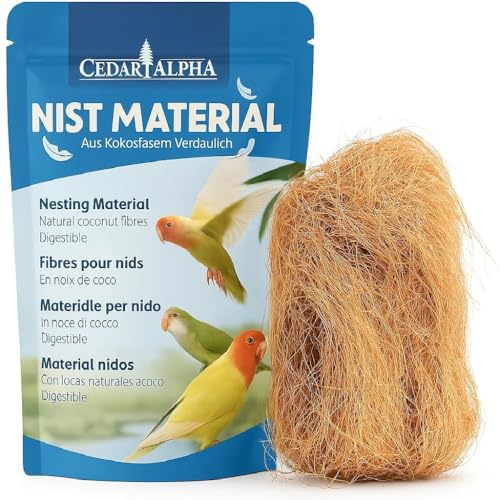Do Parakeets Need A Nest In Their Cage?
Parakeets are unique birds for many reasons. They come in a variety of jewel-like colors and can mimic words. On a visit to a friend’s house, I noticed their parakeet didn’t have a traditional nest— the round basket-like ones made of twigs. My friend told me that parakeets don’t use traditional ones, they use parakeet beds. I had never heard of those before, so I researched them. Read on to see what I discovered.
Do Parakeets Need A Nest In Their Cage?
Yes, domesticated parakeets use a certain type of nest called a parakeet bed. Wild parakeets, which are found in warm, dry regions worldwide, make holes in trees, branches, or the ground to use as their nests. Both use these structures as a place to sleep and lay eggs. Domesticated parakeets use a specific d for breeding called a nesting box.
What are parakeets?
Parakeets, also known in the United States as budgerigars or budgies, are part of the parrot species. There are many varieties in these subspecies. They are indigenous to Australia, but wild parakeets can be found in many regions in India, Asia, the Philippines, South America, Mexico, and other places with warm climates.
North American wild parakeets are no longer around, only domesticated ones exist. Its scientific name is Melopsittacus undulates, which literally means “undulating melodious parrot.”
These birds have an average life span is 10 years but can live up to 20. Parakeets can breed for 4-6 years and mate for life. Parakeets have very sweet temperaments. These happy birds like to sing, as well as hop and flit around their cage. They can be taught tricks, and some can mimic or be taught to say words. Budgies love to groom themselves and spend much of their day doing so.
They molt yearly, which means they shed their feathers. And they love to play. Online, scores of toys and puzzles can be found for parakeets. In addition to that, climbing and obstacle-course type attachments can be put on the cage to keep them active and happy.
Wild parakeets are highly social. They can live in flocks as “small” like a few hundred to several thousand. At its largest, a flock can consist of approximately 100 thousand birds. These flocks share information on the best natural resources and are nomadic species. They fly to places that offer the best supply of food and daylight hours.
Where Do Parakeets Sleep?
Domesticated parakeets can live quite happily in cages, provided they are spacious enough for them to fly around. They do not sleep in traditional nests (the ones we generally picture are robin’s nests), but hut-like enclosures. The birds do not make their own; they must be provided these structures by their owners. These nests, or parakeet beds, can either be bought at a pet store or online or easily built at home.
They look more like tiny huts as opposed to nests. The nesting material needed to construct a parakeet bed is cheap and simple. They can be made out of cardboard, wood, or plastic so long as the nesting material for parakeets is non-toxic. The bottom of the bed should be soft. You can use pine shavings, shredded paper, or other similar things to line it with.
Store-bought ones can be attached to the side of the cage to keep them sturdy. DIY ones can be built to clip onto the cages, too. The bed should be dark. Parakeets like to sleep in complete darkness and will feel safe and secure enough if their bed is. The bed should be enclosed so the bird can be warm at night. Hanging parakeet beds are another option. These can be found online for cheap.

Many of them are plush so the bird stays warm while sleeping. They come in a variety of colors and shapes. Some even look like teepees. Wild parakeets also do not build nests. Instead, they will find and occupy old, abandoned nests left by wood creatures such as squirrels or woodpeckers. Holes in tree trunks, branches, and the ground are normal dwellings for wild budgies as well.
The gray-breasted parakeet, which can be located in South America, is unique in that it builds stick nests high up in tall trees to protect it from predators (they are still in danger of bigger birds such as hawks and falcons). What are parakeet sleeping habits? Parakeets normally sleep during the night, for about 9-12 hours. To make sure they sleep well, you can cover their cage, so they aren’t disturbed.
They sleep with their eyes closed, as we do, and sometimes tucked in their feathers. Since they like to be warm, parakeets may sometimes sleep with one of their legs tucked into their body. If you have more than one parakeet, any sort of bed or hut will give them a nice warm place to snuggle with one another at night (they love to do this). If the bed is big enough to allow it, parakeets can lie down to sleep comfortably.
Parakeet Nesting Boxes
Not all parakeet owners will want to breed their birds. But if you do, there are a number of things you need to know. Obviously, make sure that you have a male and a female parakeet. To determine this, look at the cere around its beak. The cere is the fleshy part around a parakeet’s beak, near its nostrils. A male’s cere will be a mottled light blue and a female’s cere will be a solid light blue. Since parakeets mate for life, they are selective about who they breed with.
They go through a courting phase where they flirt with each other and get to know one another. Signs of parakeets flirting are nibbling or grooming each other and touching beaks. What are signs that a parakeet is ready to mate and breed? Parakeets reach sexual maturity around a year old. They breed during the summer when daylight hours are the longest and it is warmer throughout the day. When they’ve secured enough food supply, they are ready to mate.
Some signs that your parakeets are ready to mate are excessive shredding their bedding and the females may lay unfertilized eggs. When they have reached sexual maturity, the parakeets’ ceres will change color: the males will turn from the mottled light blue to a solid dark blue. The females will change light blue to an off-white or deep tan color.
If her cere is a deep tan, she is at her most fertile. Nesting boxes are the specific bed that is used when parakeets breed. They should be put into the bird’s cage before they begin to breed, so they can get accustomed to it. These can be bought or constructed like a bed and should be hooked up to the cage to keep it sturdy. If you make one, make sure the entrance hole is not too low on the box. That poses a risk of the eggs or chicks falling out.
The nesting box can be bought from a store or homemade, it is a good idea to make sure I either have a back or top that opens. That way, you can check on the eggs and chicks. Soft bedding, like the ones mentioned earlier in this article, should be put in your parakeet’s nesting box. Make sure that there is enough bedding for the mother parakeet, called a hen, can rearrange to her liking.
When the eggs are hatched, do not change the bedding for some time. In the early weeks, too much contact with the chicks may cause the hen to abandon them. One article mentions that homemade nesting boxes should have a concave circle. This is a circular dip in the nesting box to keep the chicks from skeletal deformities such as a splayed leg.
Conclusion
Parakeets can be as amazing family companions as dogs. They love interaction; you can play with them using toys and puzzles. Since they are highly intelligent, you can teach them to speak and converse with you (the most recorded words a parakeet has learned is almost 2000 words). Keeping them safe and happy is simple and inexpensive.
When they are happy, they are sonorous and playful. You just have to be careful. As with all pets, being observant of your parakeet’s behavior is important. If they are not getting adequate sleep, that can lead to mental and physical health issues.
The variety of beds and hanging huts like the ones mentioned in this article are plenty. You may just need to find the right one for your bird. Parakeets are similar to humans in that way. They have likes, dislikes, and preferences.
You might like a firm mattress that can stay cool all night, perhaps they like the swinging motion of a hanging bed. Maybe you like to have a blanket covering your whole body but also have the fan on to circulate the air, they might like a firmer bed that is plush so they can lie down and sleep warmly.
You, as the owner, should do what you can to make your bird as happy as possible. The reward is immense. Let’s be honest what is a better reward in life than a happy pet?





